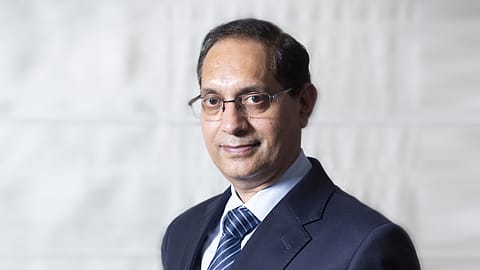Will the new Sebi chief Tuhin Kanta Pandey walk the talk in a market on the edge?
Tuhin Kanta Pandey, 60, assumed office as the 11th Chairperson of Sebi on Saturday, March 1, 2025. He has his role cut out.

At its core, the Securities and Exchange Board of India (Sebi’s) mandate is well-defined—investor protection, market regulation, and development. But as Subhash Chandra Garg, former finance secretary, tells Fortune India: the challenge is not in defining the priorities but in the execution. Sebi does not have the luxury of selective regulation; rather, it must address every aspect of its duty comprehensively. “You can’t choose to do something as a priority and ignore something else that is equally essential,” he argues, suggesting that the job is an exhaustive one that demands systemic, rather than piecemeal intervention.
Garg comments come against the backdrop of Tuhin Kanta Pandey, 60, assuming office as the 11th Chairperson on Saturday, March 1, 2025. Pandey, who will be in charge for three years, has outlined four key objectives for his tenure: technology, trust, transparency, and teamwork. Pandey emphasised that the regulator is a robust and evolving market institution, and his goal is to make it the best in its class. “We have built a strong institution, and we will continue contributing to its growth,” he stated.
The government’s decision to revert to appointing bureaucrats rather than private-sector professionals as the chief of Sebi may insulate the position from reputational concerns. Garg, who has worked with Pandey closely, describes him as “intelligent and hardworking”.
Interestingly, Pandey’s appointment coincides with significant turbulence in India’s equity markets. The current meltdown raises a pertinent question about the regulator’s role—should it intervene when market froth builds up, like it was visible in small and mid-cap stocks, or should it let market forces play out? Garg acknowledges that the nature of the markets is inherently volatile but warns against regulatory inertia. “If your answer is to do nothing and watch, then you are not doing your job.”
The rapid increase in demat accounts, the relationship between IPO financing and NBFC lending, and the rise of the influencer community in financial markets are all areas where Sebi must stay ahead of the curve. Garg cautions that regulation should not just be about reacting to fraud but about analysing market patterns and pre-emptively addressing vulnerabilities.
The regulator’s primary responsibility is to ensure that capital is raised in a fair manner and that no entity manipulates the system. Yet, when allegations surface about certain operators manipulating small-cap issues or fuelling excessive speculation in the grey markets, Sebi cannot afford to turn a blind eye. Past interventions—such as restrictions on derivatives speculation after a study revealed consistent investor losses—demonstrate the regulator’s ability to act decisively. The question is, will it take similar measures in the cash market, where new forms of manipulation are allegedly emerging?
One of the most pressing concerns for Sebi is the potential tipping point in the mutual fund systematic investment plans (SIPs). While SIPs have provided strong market support in recent years, there is growing evidence that some investors are beginning to pull back. If the tide turns, it could trigger a chain reaction—DIIs, which have so far absorbed foreign institutional investor (FII) sell-offs, may be forced to sell. Who will be the buyer then? Garg warns of the high probability of this scenario unfolding, stressing the need for Sebi to analyse these trends and prepare countermeasures.
Recommended Stories
“Five or six years ago, when penny stock manipulations were rampant, Sebi intervened by moving those stocks to the trade-to-trade category, effectively curbing the issue. If the regulator can identify such problems beforehand and act decisively, it can prevent market crises rather than just responding to them.”
The fundamental challenge for Sebi is navigating the fine line between under-regulation and over-regulation. The financial markets are inherently driven by human behaviour—greed, risk-taking, and speculation. A completely hands-off approach invites manipulation, while excessive intervention can stifle market dynamism. Garg’s remarks suggest that Sebi must operate with a sophisticated understanding of market behaviour, intervening strategically rather than reactively.
The handling of the Adani case will serve as an early test of the new Sebi chief’s approach to regulatory scrutiny. Will the watchdog pursue investigations with rigor, or will it allow legal and procedural loopholes to dictate its response? Garg hints at a systemic flaw in the regulatory framework when he notes that if accusations of manipulation and foreign indictments are not investigated thoroughly, the regulator risks losing credibility.
The broader issue, however, is not just about individual cases but about systemic interventions. “It can’t be a case-by-case approach,” Garg asserts. Sebi’s past actions, such as barring companies that raised disproportionate amounts of money with minimal turnover, show that it can act decisively.
(INR CR)
With the weight of investor confidence resting on its shoulders, the new Sebi leadership will need to demonstrate both agility and resolve. The question is not whether Tuhin Kanta Pandey is capable—his record suggests he is—but whether he will walk the hard talk in a market that is constantly testing its limits.